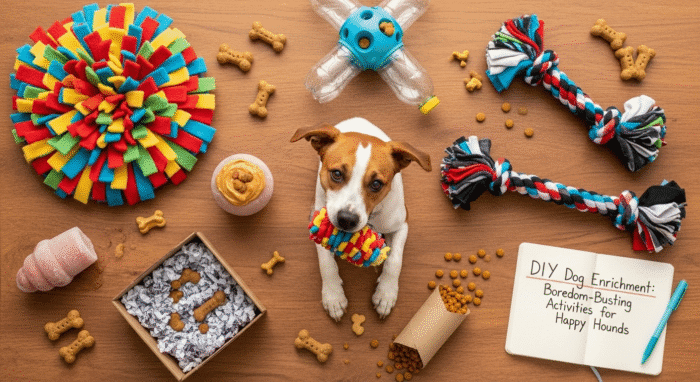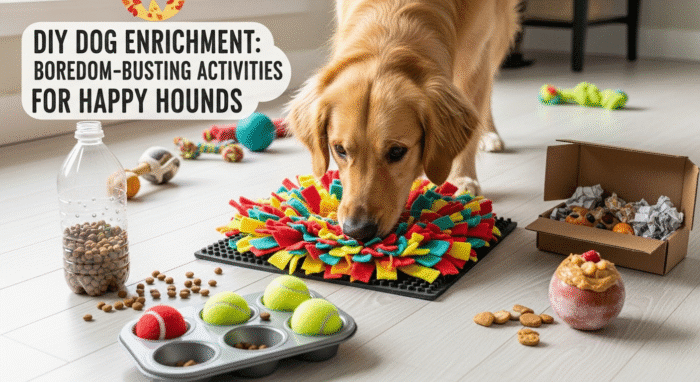Okay, so picture this: You’re chilling on the couch, maybe binge-watching that show everyone’s obsessed with, and you glance over at your dog. And they’re… just… there. Staring. Maybe sighing dramatically. Sound familiar? It’s a tale as old as time (or, you know, since we domesticated canines). Boredom in dogs? It’s real. And a bored dog is often a destructive, anxious, or just plain loud dog. But here’s the thing: it doesn’t have to be that way.
We’re not just talking about a quick walk around the block (although those are important too!). We’re diving deep into the wonderful world of DIY dog enrichment. Think of it as crafting a canine amusement park, right in your own home.
Table of Contents
Unleashing Your Inner Doggy Designer: The Power of Enrichment

Enrichment, at its core, is about stimulating your dog’s mind and senses. It’s about giving them a job to do, even if that job is “figure out how to get the kibble out of this weird contraption I made.” It’s really important to think about what your dog was originally bred to do as well. Herding dogs need different stimulation to scent hounds, for instance. My border collie, bless her frantic little heart, needs a daily “job”, or she will find one (usually involving my shoes). Choosing the right breed can make a huge difference to you and your pup.
And trust me, the benefits go way beyond just preventing chewed-up furniture. Enrichment can:
- Reduce anxiety and stress
- Decrease destructive behaviors
- Increase confidence
- Strengthen the bond between you and your furry friend
- …and, let’s be honest, give you some peace and quiet!
So, where do we start? Well, with a little creativity and some stuff you probably already have lying around.
DIY Enrichment Activities: From Simple to Slightly-Less-Simple
I like to break down enrichment into a few categories: food puzzles, sensory stimulation, and physical challenges. Each taps into different aspects of your dog’s natural instincts.
Food Puzzles: The Classic Choice The old snuffle mat! Seriously, you can buy them, but it’s super easy to make one. Just grab an old rubber mat (like a welcome mat) and some strips of fleece. Tie the fleece strips through the holes in the mat, creating a shaggy surface. Sprinkle kibble throughout the fleece, and let your dog sniff and forage to their heart’s content.
Actually, that’s not quite right. Let me try to explain this more clearly. A snuffle mat is great, but you could also just use an old towel! Roll the kibble up inside the towel, making it progressively tighter. Your dog gets to use their nose and their problem-solving skills. And it only takes a minute to set up.
Then there’s the “muffin tin game.” Place treats in some of the muffin tin cups, cover all the cups with tennis balls, and watch your dog figure out how to get to the goodies. The frustrating thing about this topic is that it’s so simple, it’s almost embarrassing not to do it!
Sensory Stimulation: Engaging the Senses This is where things get interesting. Think about all the amazing smells, textures, and sounds that dogs experience (or, more likely, we prevent them from experiencing in our overly sanitized homes). We can safely introduce some of these elements to spice up their lives.
Consider a “scent box.” Fill a box with safe items that have different smells and textures: pinecones, dried leaves, herbs, even a worn-out t-shirt that smells like you. Hide treats within the box to encourage exploration. Just make sure everything is non-toxic and doesn’t pose a choking hazard.
And speaking of senses, have you ever thought about sound? Some dogs love music! There are even playlists designed specifically to calm anxious dogs. Or, if you’re feeling brave (and your neighbors are understanding), you could try introducing new sounds like wind chimes or nature recordings. Here’s the thing – start slow. Don’t overwhelm your dog.
Physical Challenges: Beyond the Walk Okay, so we already touched on walks being important, but what about when you’re stuck inside? How do you get that physical energy out? One idea is a DIY agility course. Use pillows, blankets, chairs, and even cardboard boxes to create a mini obstacle course in your living room. Guide your dog through the course using treats and praise. Think small, think safe, and most importantly, think fun!
Another idea is a flirt pole. It’s basically a long stick with a rope and a lure attached to the end. You can use it to mimic prey, encouraging your dog to chase, pounce, and jump. Talk about an energy burner! But remember to use it responsibly, avoiding sudden twists or turns that could injure your dog.
Wait, there’s something even more interesting here. Did you know that, on average, dogs spend around 50% of their day asleep? Ensuring their bed and sleeping spot are enriching is equally as important as these DIY activities. A high quality dog bed can make a huge difference to your pups quality of life.
Safety First (and Always!)
I keep coming back to this point because it’s crucial: safety is paramount. Always supervise your dog during enrichment activities, especially when they’re first starting out. Make sure all materials are non-toxic, and avoid anything that could be a choking hazard. And listen to your dog! If they seem stressed or overwhelmed, back off and try something different.
Use common sense. Which sometimes, admittedly, I lack. But when it comes to my dogs, I try to be extra careful. Don’t use anything sharp, anything breakable, or anything that could potentially harm your furry friend. And if you’re ever unsure, err on the side of caution.
Consider creating a little doggy play zone in the backyard too. According to the AKC, regular engagement with your dog in a safe environment reduces the chance of your dog becoming anxious when they are alone.
FAQ: Your Burning Enrichment Questions Answered
How do I know if my dog is bored?
Well, boredom in dogs can manifest in a few different ways. The most obvious sign is destructive behavior: chewing, digging, scratching, etc. But other signs can be more subtle: excessive barking or whining, pacing, restlessness, or even just a general lack of interest in things they usually enjoy. Some dogs even get a little… mopey. You know your dog best, so trust your gut.
What if my dog isn’t interested in food puzzles?
Not all dogs are immediately drawn to food puzzles. Some might be intimidated, while others might just not understand what they’re supposed to do. Start simple! Use easy puzzles with high-value treats. And don’t give up too soon! It might take a few tries for your dog to catch on. You can also try showing them how it works by demonstrating it yourself (yes, I’ve totally pretended to be a dog solving a puzzle). If they’re still not interested, try a different type of enrichment. Food puzzles aren’t the only game in town.
Is too much enrichment a bad thing?
Believe it or not, yes. Overstimulation can be just as harmful as understimulation. Watch for signs of stress: panting, yawning, lip licking, whale eye (when you can see the whites of their eyes). If your dog seems overwhelmed, scale back the enrichment activities and give them some quiet time to decompress. It’s all about finding the right balance.
How often should I do these DIY dog enrichment activities?
There’s no one-size-fits-all answer. It depends on your dog’s individual needs and energy levels. Some dogs might benefit from daily enrichment, while others might only need it a few times a week. A good rule of thumb is to incorporate enrichment into your dog’s daily routine, even if it’s just for a few minutes each day. Think of it as a way to keep their minds engaged and their bodies happy. Variety is key!
What are the dangers of lack of enrichment?
If you fail to enrich your dogs life you may find them to get anxious and this can turn into very destructive behaviour. Most dogs need some form of stimulation every single day. If you are unable to enrich your dogs life due to other commitments and lifestyle choices, then consider rehoming your beloved pup!
So, there you have it. A whirlwind tour of the wonderful world of DIY dog enrichment. Remember, it’s not about being perfect. It’s about being present, being creative, and most importantly, having fun with your furry friend. Because at the end of the day, a happy dog is a happy life (and a less chewed-up sofa!).

